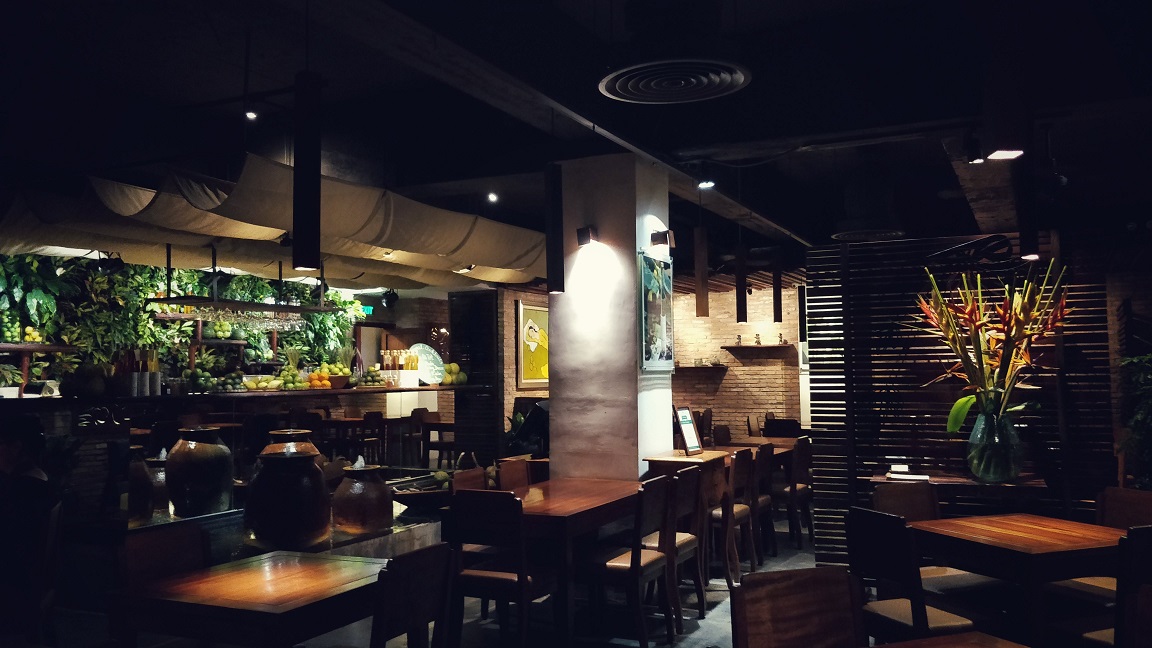Pan Asian Dining Islamabad: Enjoy Genuine Asian Meals
Savor Authentic Asian Cuisine With a Pan-Asian Twist for a Culinary Experience
Beginning on a cooking journey through genuine Asian cuisine, enhanced with a Pan-Asian spin, offers an unique chance to explore the rich tapestry of flavors that define the region's varied cooking practices. As you contemplate these luring recipes, take into consideration the social stories and historic influences that shape them, each bite using a story waiting to be uncovered. Chinese food Islamabad.

Discovering Pan-Asian Flavors
In the realm of worldwide gastronomy, Pan-Asian food stands apart for its exceptional variety and the unified interaction of tastes from different Eastern cultures. This cooking method celebrates the abundant traditions and one-of-a-kind active ingredients located across the continent, producing a tapestry of preferences that is both rewarding and fascinating. Trick to Pan-Asian cuisine is its capability to stabilize different flavors-- sweet, salted, spicy, and sour-- while highlighting the quality and top quality of each component.
From the umami-rich soy sauce of Japan to the intense chili peppers of Thailand, Pan-Asian cuisine provides a substantial palette of tastes. These components are typically incorporated in innovative methods, improving meals with layers of complexity. For example, using great smelling herbs such as lemongrass and cilantro, usual in Vietnamese and Thai food, adds a rejuvenating illumination to dishes, while the incorporation of coconut milk provides a creamy, rich structure.
The emphasis on fresh fruit and vegetables and aromatic flavors guarantees that each meal is not only a feast for the palate yet additionally for the detects. Pan-Asian cuisine welcomes diners to get started on a culinary journey, checking out the vast and differed landscapes of Eastern gastronomy with every bite.
Combination Recipes to Try
While Pan-Asian food is celebrated for its conventional tastes, the modern culinary landscape is increasingly accepting combination meals that mix these timeless elements with influences from other regions. This ingenious approach not just honors the abundant heritage of Oriental culinary arts however additionally presents novel preference experiences that interest contemporary tastes.
A prime instance of such a blend recipe is the Korean-Mexican taco, where marinated bulgogi beef is wrapped in a warm tortilla, covered with kimchi and a hot gochujang-infused salsa. This combination weds the vibrant, mouthwatering tastes of Korea with the vivid, fresh aspects of Mexican food. In a similar way, sushi burritos have actually gotten appeal, amalgamating the delicate artistry of Japanese sushi with the passionate, hand-held ease of a burrito, commonly featuring fusion components like tempura shrimp and avocado with a drizzle of wasabi mayo.
An additional significant dish is Thai curry ramen, which infuses the creamy, fragrant spices of Thai curry right into the soothing broth of conventional Japanese ramen, producing an unified mix that entices the senses. These blend recipes expand beyond simple uniqueness; they stand for a culinary discussion between cultures, encouraging exploration and development on the planet of Pan-Asian cuisine.
Vital Active Ingredients and Spices
To truly appreciate Pan-Asian cuisine, one need to comprehend the vital active ingredients and seasonings that develop its structure. This diverse culinary style attracts from an abundant tapestry of Eastern practices, using an unified mix of structures and flavors. Key components include soy sauce, fish sauce, and oyster sauce, which pass on a tasty umami deepness essential to Eastern dishes. Corresponding to these are rice vinegar and mirin, providing a delicate level of acidity and sweetness.
Aromatic elements are essential, with ginger, garlic, and lemongrass being common across different Pan-Asian dishes. These components offer a fragrant base that boosts the complexity of tastes. Flavors such as celebrity anise, cardamom, and cinnamon present heat and character, resembling influences from regions like China and India.

Food Preparation Techniques and Tips
Mastering the art of Pan-Asian food calls for knowledge with its unique cooking methods, each adding to the vivid tapestry of flavors this culinary tradition is celebrated for. Central to these methods is the stir-fry, a fast cooking technique that maintains the nutritional stability and have a peek at this website vibrant shades of components. Making use of a frying pan, the stir-fry approach permits also warm distribution, essential for attaining the characteristic texture and taste balance of Pan-Asian dishes.
An additional essential method is steaming, particularly prevalent in Chinese food. This gentle technique preserves the natural tastes and nutrients of ingredients, making it ideal for fish and shellfish and veggies. Dumplings, a cherished staple, usually take advantage of steaming, resulting in soft, succulent textures.
Cooking, likewise integral, passes on great smoky midsts to meals such as Oriental bulgogi or Japanese yakitori (pan asian restaurant Islamabad). This method typically involves marinating active ingredients, enabling tastes to permeate deeply before food preparation over an open flame or warmer
Lastly, mastering the art of stabilizing flavors-- sweet, sour, salted, bitter, and umami-- is vital. Appropriately layering these aspects can boost a dish from average to extraordinary, supplying a complex and pleasing culinary experience that personifies the significance of Pan-Asian food.
Dining Experiences Worldwide
Across the globe, Pan-Asian food provides an unrivaled dining experience, celebrated for its abundant tapestry of flavors and vivid discussions. This cooking sensation has gone beyond social borders, capturing the hearts and tastes of food enthusiasts worldwide. In worldwide cities fresh York, London, and Sydney, Pan-Asian restaurants function as melting pots where culinary traditions from Thailand, Japan, China, and beyond merge, giving restaurants with a diverse mix of dishes that highlight the region's diversity.
The global appeal of Pan-Asian cuisine hinges on its capacity to use both credibility and technology. Chefs skillfully wed traditional active ingredients such as lemongrass, soy sauce, and miso with contemporary techniques, resulting in dishes that are both familiar and refreshingly brand-new. This combination permits restaurants to start a culinary journey that values heritage while embracing modernity.
Additionally, dining experiences are boosted via attentively designed settings that mirror the values of Pan-Asian aesthetics. From minimal Japanese-inspired insides to lively Thai-themed spaces, each dining establishment supplies an unique setting that matches the culinary offerings. Because of this, customers are not merely eating a meal but partaking in a social experience, making Pan-Asian eating a truly international phenomenon.
Verdict
The exploration of Pan-Asian cuisine offers an extensive understanding of the elaborate interaction of tastes and culinary practices throughout Asia. By welcoming blend recipes such as Thai curry ramen and sushi burritos, the cooking journey not just highlights the versatility of typical active ingredients but also showcases ingenious contemporary strategies. This gastronomic journey, enriched by cooking techniques and essential seasonings, provides a special opportunity to value the cultural variety and cooking artistry that specify Pan-Asian food on an international range.
Getting started on a cooking trip via authentic Eastern cuisine, improved with a Pan-Asian twist, provides an unique opportunity to explore the abundant tapestry of tastes that define web the region's diverse cooking traditions.In the try here realm of international gastronomy, Pan-Asian food stands out for its remarkable diversity and the unified interaction of tastes from various Oriental societies. Trick to Pan-Asian cuisine is its capacity to stabilize different tastes-- pleasant, salty, spicy, and sour-- while highlighting the quality and high quality of each active ingredient.
